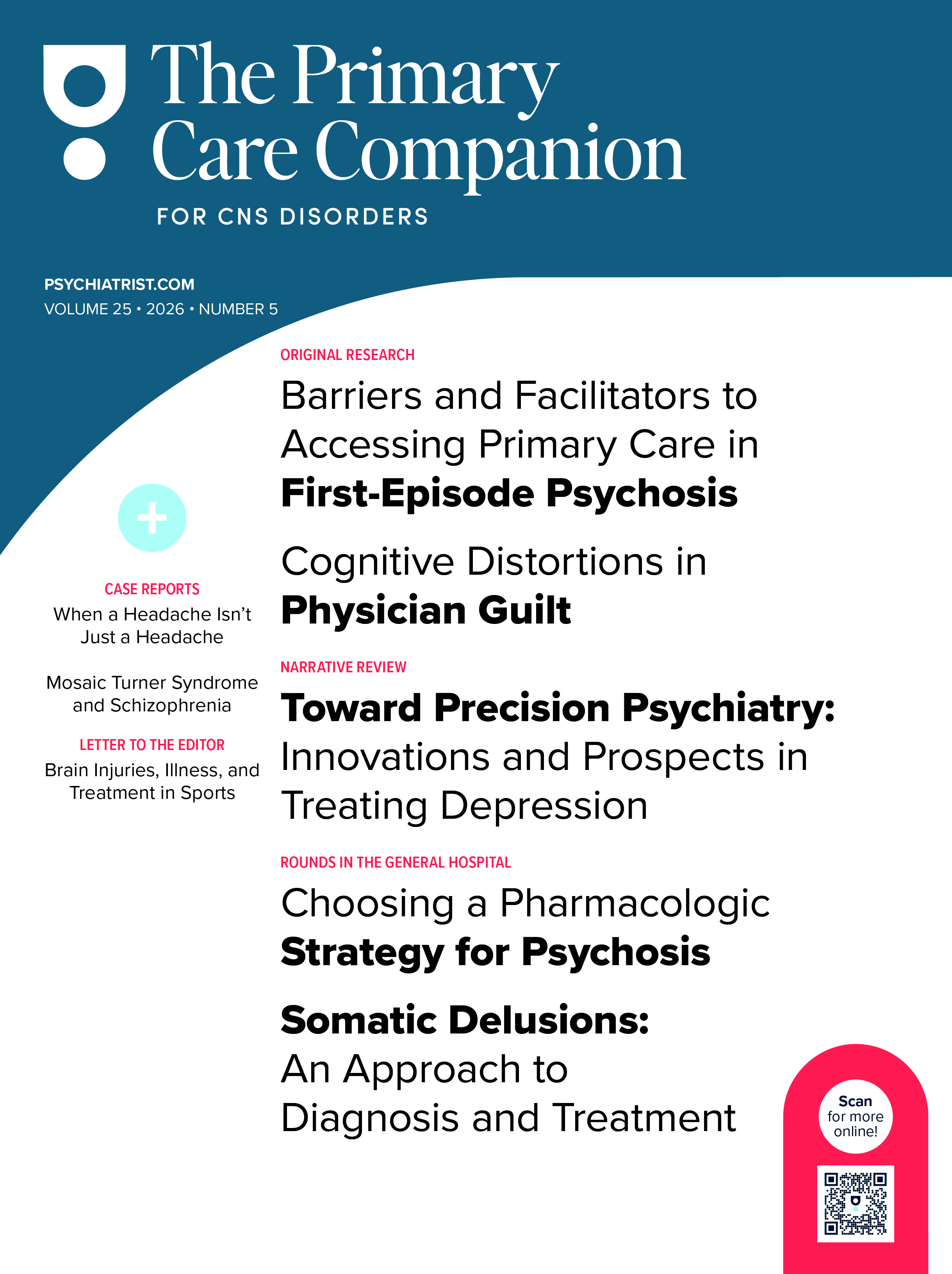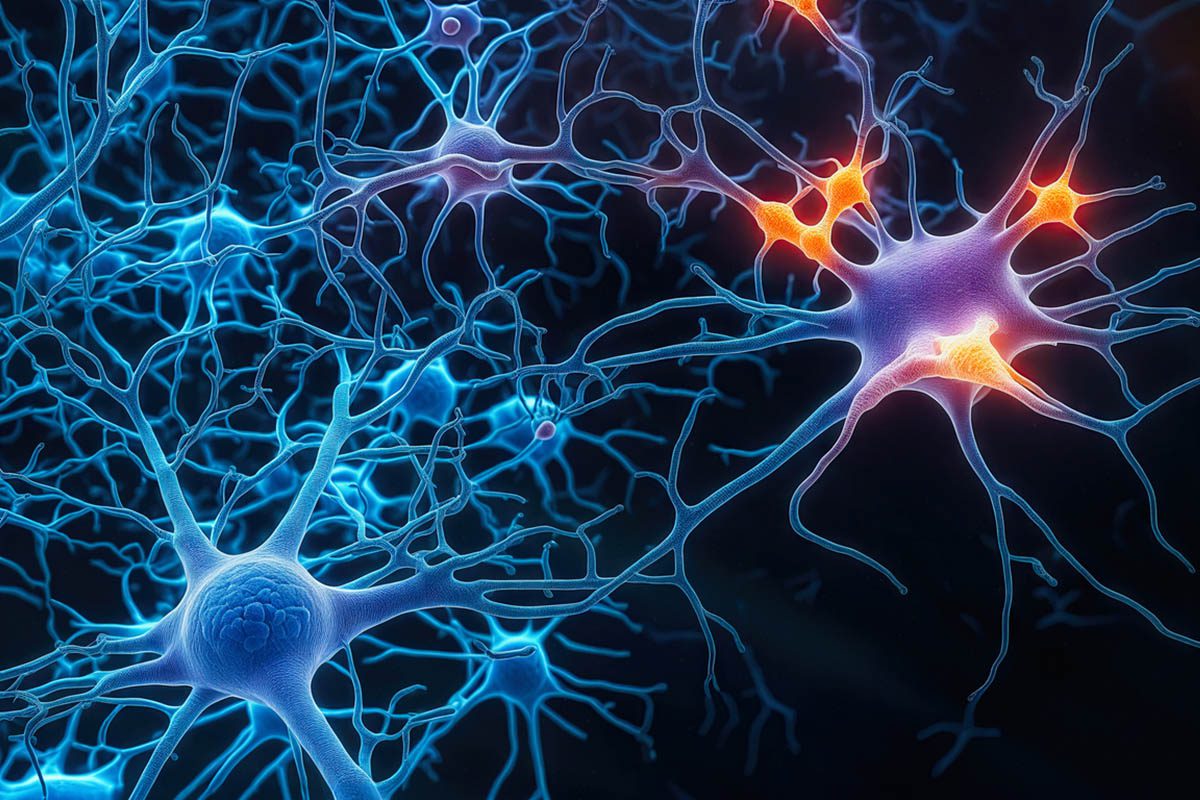Multiple sclerosis (MS) is a chronic demyelinating disorder of the central nervous system characterized by recurrent episodes of neurologic deficits. Visual symptoms are common in MS, typically manifesting as optic neuritis, which may lead to vision loss, diplopia, and other visual disturbances.1 Visual hallucinations, although rare in MS, are reported in the literature, particularly in the context of visual impairment.2 Complex visual hallucinations prompt a differential diagnosis including Charles Bonnet syndrome (CBS).3 CBS is characterized by visual hallucinations in individuals with significant vision loss and intact cognitive function.4 This report presents a unique case of a young woman with MS who developed vision loss and complex visual hallucinations, indicating the possibility of CBS in the setting of a longstanding demyelinating disease.
Case Report
A 28-year-old woman with a known diagnosis of MS since the age of 17 years presented with a 1- month history of left-sided vision loss. She reported that this episode was associated with vivid visual hallucinations involving children seen among crowds. She also described seeing stars and geometric shapes. The hallucinations were neither distressing nor associated with any delusional thoughts.
On mental status examination, her higher mental functions were intact, and thought content was normal. The neurological examination revealed constriction of the visual field in the left eye, while all other cranial nerve functions were normal. Systemic examination findings were unremarkable.
Routine blood investigations were within normal limits. Visual evoked potentials showed reduced amplitude in the left eye, with no detectable waves in the right eye, indicating severe optic nerve involvement. Brain magnetic resonance imaging revealed lesions in the periventricular white matter and optic pathways.
The patient had a history of multiple episodes of neurological deficits over the previous 11 years, which included diplopia and limb weakness. However, none of these episodes had been associated with visual hallucinations. She had been intermittently treated with cycles of interferon β and rituximab over the course of her illness, with good clinical responses leading to the complete resolution of symptoms after each relapse.
Given the history of vision loss and vivid visual hallucinations in the context of significant optic nerve damage, the clinical presentation was consistent with CBS. The episode was treated with methylprednisolone, and the patient was psycho-educated about the benign nature of the hallucinations.
Discussion
This case demonstrates the occurrence of CBS in the context of MS. CBS typically occurs in patients with significant vision loss, leading to complex visual hallucinations without associated psychiatric symptoms. The visual hallucinations described in CBS are often detailed. Importantly, the hallucinations in CBS are not distressing, which aligns with this patient’s description of her symptoms.4
While optic neuritis is a well-known manifestation of MS,5 the co-occurrence of CBS adds a rare dimension to the patient’s disease course. The mechanism behind CBS in patients with visual impairment is thought to involve deafferentation of visual inputs to the brain, causing hyperactivity in the visual cortex and leading to hallucinations. In MS, optic neuritis results in significant vision loss, particularly during relapses, which may explain the development of hallucinations in this case.4 Visual evoked potentials confirmed the presence of severe optic nerve damage, further supporting the hypothesis that these hallucinations were the result of CBS rather than a primary psychiatric condition.6
In managing CBS, patient education plays a key role, as reassurance about the benign nature of hallucinations can reduce anxiety. This case underlines the need to recognize rare neuropsychiatric phenomena such as CBS in patients with MS, especially those with significant visual deficits.
Article Information
Published Online: June 19, 2025.
https://doi.org/10.4088/PCC.24cr03865
© 2025 Physicians Postgraduate Press, Inc.
Prim Care Companion CNS Disord 2025;27(3):24cr03865
Submitted: October 7, 2024; accepted January 1, 2025.
To Cite: Mittal T, Jalaja Haridas N. Charles Bonnet syndrome in a patient with multiple sclerosis: a rare presentation of complex visual hallucinations associated with optic neuritis. Prim Care Companion CNS Disord 2025;27(3):24cr03865.
Author Affiliations: Department of Psychiatry, Government Medical College, Kozhikode, Kerala, India (Mittal, Jalaja Haridas).
Corresponding Author: Tanvi Mittal, MBBS, Department of Psychiatry, Government Medical College, Kozhikode, Kerala 673008, India ([email protected]).
Relevant Financial Relationships: None.
Funding/Support: None.
Patient Consent: Consent was obtained from the patient to publish the case report, and information has been de-identified to protect patient anonymity.
ORCID: Tanvi Mittal: https://orcid.org/0009-0009-4608-6413; Nishanth Jalaja Haridas: https://orcid.org/0000-0002-2517-2031
References (6)

- Doshi A, Chataway J. Multiple sclerosis, a treatable disease. Clin Med. 2016;16(suppl 6):s53–s59. PubMed CrossRef
- Alao AO, Hanrahan B. Charles Bonnet syndrome: visual hallucination and multiple sclerosis. Int J Psychiatry Med. 2003;33(2):195–199. PubMed CrossRef
- Komeima K, Kameyama T, Miyake Y. Charles Bonnet syndrome associated with a first attack of multiple sclerosis. Jpn J Ophthalmol. 2005;49(6):533–534. PubMed CrossRef
- Pang L. Hallucinations experienced by visually impaired: Charles Bonnet syndrome. Optom Vis Sci. 2016;93(12):1466–1478. PubMed CrossRef
- Wilhelm H, Schabet M. The diagnosis and treatment of optic neuritis. Dtsch Arztebl Int. 2015;112(37):616–626. PubMed CrossRef
- Zafeiropoulos P, Katsanos A, Kitsos G, et al. The contribution of multifocal visual evoked potentials in patients with optic neuritis and multiple sclerosis: a review. Doc Ophthalmol. 2021;142(3):283–292. PubMed CrossRef
Please sign in or purchase this PDF for $40.




